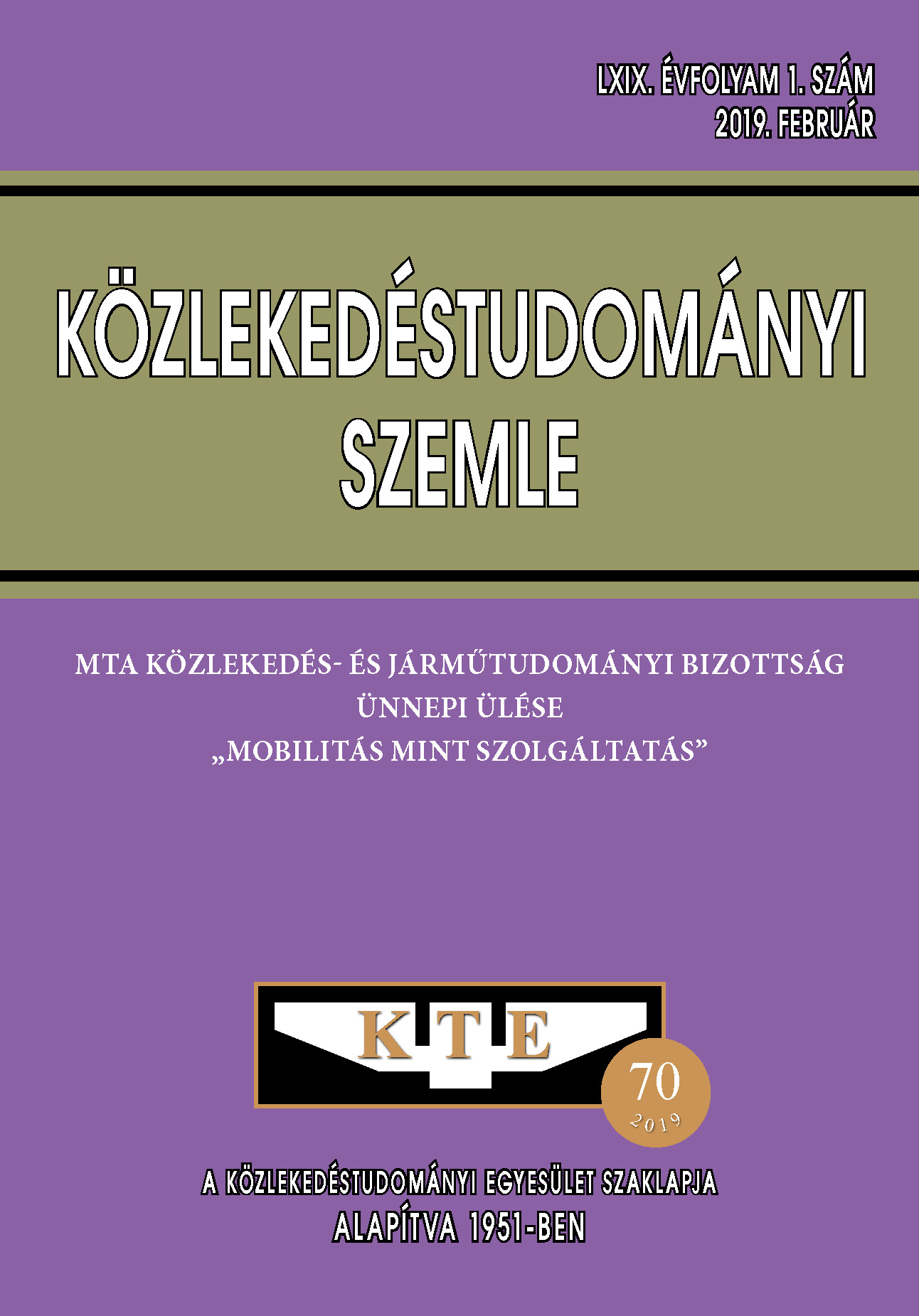The effect of autonomous vehicles: new challenges of vehicle and traffic control
Abstract
Development of autonomous vehicles is an enormous project for car manufacturers, but also a big challenge for traffic engineers. When driverless cars start circulating on public roads with high proportion, the traditional traffic modeling and control methods need thorough revision. Microscopic traffic models (and simulators) must be capable of appropriately capturing the dynamics of autonomous driving. Similarly, the characteristic values of the macroscopic fundamental diagram and its shape will significantly alter. In addition, the microscopic traffic simulation becomes important in the process of autonomous vehicle development and testing, especially in the “Vehicle-inthe-Loop” test environment
References
SAE International (2016): Taxonomy and Definitions for Terms Related to Driving Automation Systems for On-Road Motor Vehicles, J3016_201609, http://standards.sae.org/j3016_201401
Zöldy M. (2019): Legal Barriers of Utilization of Autonomous Vehicles as Part of Green Mobility. In: Burnete N.,
Varga B. (eds) Proceedings of the 4th International Congress of Automotive and Transport Engineering (AMMA 2018). AMMA2018 2018. Proceedings in Automotive Engineering. Springer, Cham
Fagnant, D.J., Kockelman, K.M. (2015): Preparing a nation for autonomous vehicles: opportunities, barriers and policy recommendations. Transportation Research Part A: Policy and Practice, 77, 167-181., DOi: http://doi.org/gc4n5r
Milakis, D., Snelder, M., Van Arem, B., Van Wee, B, Correia, G. (2017): Development of automated vehicles in
the Netherlands: scenarios for 2030 and 2050, European Journal of Transport and Infrastructure Research, EJTIR, 17(1), 63-85. ISSN: 1567-7141, http://tlo.tbm.tudelft.nl/ejtir
Williams, J. C., Mahmassani, H. S., Iani, S. and Herman, R. (1987): Urban traffic network flow models, Transportation Research Record 1112, 78–88
Csikós, A., Tettamanti, T. and Varga, I. (2015): Macroscopic modeling and control of emission in urban road
trafficnetworks,Transport 30(2), 152-161. DOI: http://doi.org/cxmb
Krajzewicz, D., Erdmann, J., Behrisch, M. and Bieker, L. (2012): Recent Development and Applications of SUMO - Simulation of Urban MObility. International Journal On Advances in Systems and Measurements, 5 (3&4):128-138
Geroliminis N., Daganzo C. F. Existence of urban-scale macroscopic fundamental diagrams: Some experimental findings. Transportation Research Part B: Methodological 2008, 42(9):759–770. DOI: http://doi.org/dzfcbb
Luspay T., Tettamanti T., Varga I.: Forgalomirányítás, Közúti járműforgalom modellezése és irányítása (2011): ISBN 978-963-279-665-9, Typotex Kiadó, Budapest
Wegener, A., Piórkowski, M., Raya, M. Hellbrück, H., Fischer, S. and Hubaux, J.-P. (2008): TraCI: an interface for coupling road traffic and network simulators. In Proceedings of the 11th communications and networking simulation symposium (CNS '08). ACM, New York, NY, USA, 155-163. DOI: http://doi.org/c44qw8
Krauss S. (1998): Microscopic Modeling of Traffic Flow: Investigation of Collision Free Vehicle Dynamics. Ph.D. thesis, Universität zu Köln
Kudarauskas, N. (2007): Analysis of emergency braking of a vehicle, Transport 22(3), 154–159.
Atkins Ltd. (2016): Research on the impacts of connected and autonomous vehicles (cavs) on traffic flow, Technical report, Department for Transport
Szalay Zs., Nyerges A., Hamar Z., Hesz M. (2017): Technical specification methodology for an automotive proving ground dedicated to connected and automated vehicles, Periodica Polytechnica ser. Transp. Eng. 45:(3) pp. 168-174. DOI: http://doi.org/cxk3
Articles published electronically are open access (OJS), freely available online and can be downloaded. Authors of articles are not charged any publication or publishing costs (APC). Users have the right to read, download, copy, print, and search the articles, or share the full text with a link.
Authors must declare that their submission has not been previously published in another journal, that financial support has been acknowledged, and that the list of references is complete and accurate, including specification of URLs and DOIs (if available). When submitting a draft article, each author approves the submitted version. Authors guarantee that the article is their original work. Authors are required to participate in the peer review process, follow the advice of reviewers, meet the prescribed deadlines, and, if any, withdraw the submission or correct errors.
All submitted articles are subject to peer review, where the editors request an independent evaluation from at least one expert, ensuring that the reviewer(s) have no conflicts of interest with the authors. The final decision is made by the Editor-in-Chief, who takes into account the evaluations and the suggestions of the editors. The editors and reviewers treat the submission confidentially.
The publisher and editors are committed to maintaining high ethical standards and to preventing publications that involve research misconduct. They follow the COPE guidelines on such ethical issues.
The authors retain copyright and grant the journal the right of first publication under the Creative Commons License (https://creativecommons.org/licenses/by-nc-nd/4.0), which allows others to share the work, while acknowledging the authorship of the work and the first publication in the journal.
The journal archives all published articles, and the journal's owner, the Hungarian Society of Transportation Sciences, will continue to operate the database even if the journal ceases to be published.















